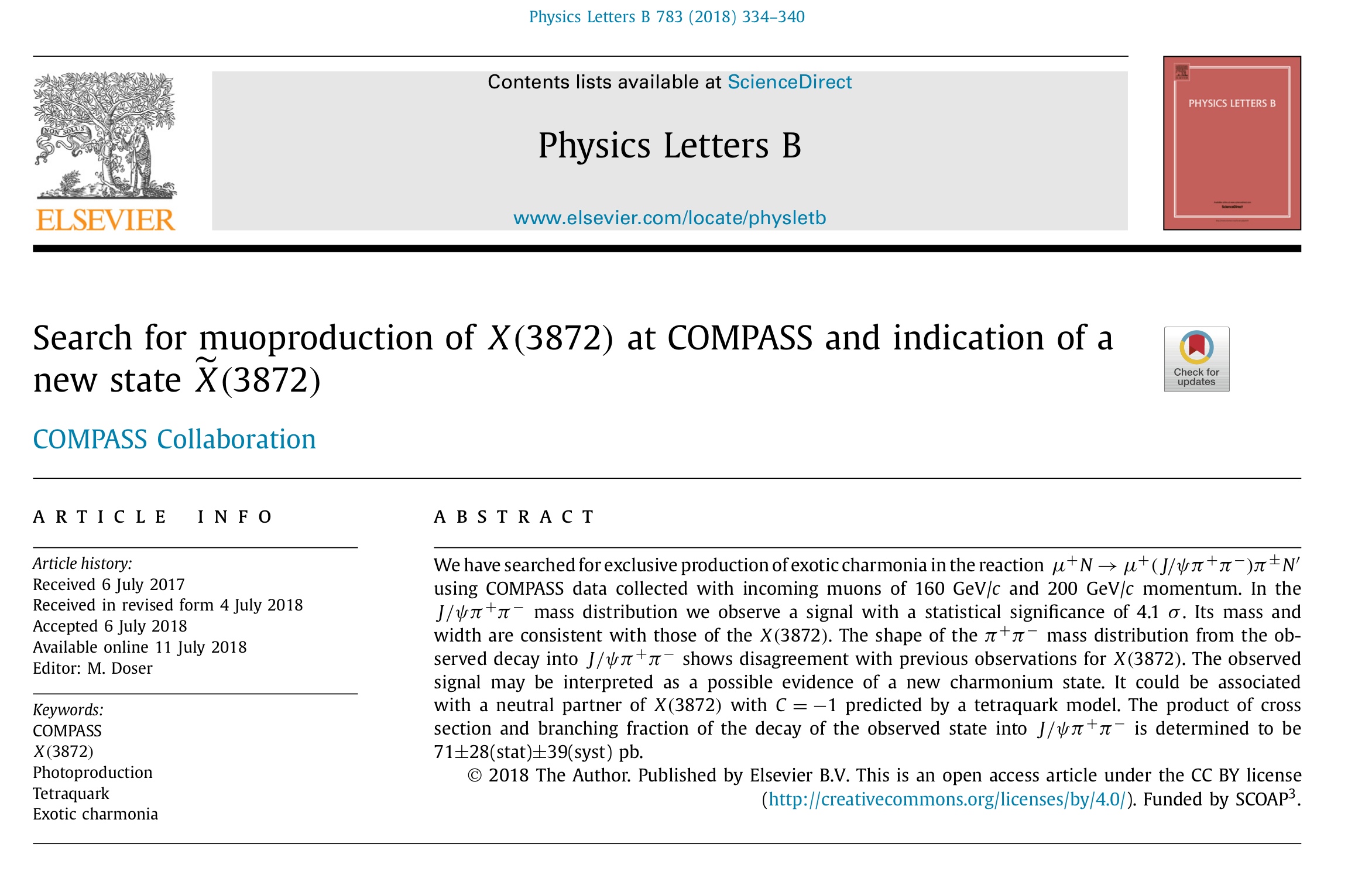Evidence of new particle existence obtained by JINR scientists
World science, 19 July 2018
Search for photoproduction of exotic charmonium X(3872) in the COMPASS experiment (CERN) led to an unexpected result. Despite the fact that a signal with a statistical significance of 4.1 σ in the spectrum of invariant masses of the final state was found to be fully consistent in its parameters with the expected one, a detailed analysis of the decay kinematics of the observed particle showed a complete discrepancy between the well-known decay kinematics of X(3872).
This surprising observation gave an opportunity to suppose that the discovered signal may belong to a new particle that was called X̃(3872) ) that is a partner particle for X(3872). It has almost the same mass and lifetime as X(3872) but different set of quantum numbers. Existence of such a partner particle is predicted by some theoretical models describing X(3872) as a state of two quarks and two antiquarks closely bounded by strong interaction (tetraquark). The results of the work are published in the Physics Letters B journal #783 (2018) pp. 334-340.

Quantum chromodynamics does not exclude the existence of states bounded by strong interaction other than consisted of three quarks (baryons) or a pair of quark-antiquark (mesons). However, there has been no convincing and indisputable experimental evidence of such multi-quark states until recently. The situation changed only at the beginning of 2000s after discovery of exotic hadrons containing heavy quarks (c or b) the first of which was X(3872) discovered in 2003 by the Belle collaboration. In spite of the fact that several dozens of such particles have been discovered for 15 years, their nature is not fully clear. Different models treat them as tetraquarks, meson molecules, states with valence gluons and etc. The result obtained by COMPASS will probably cast light on the nature of exotic charmonia.
Until now, exotic charmonia have been available for study only at electron-positron colliders and in the collision of high-energy hadrons. The COMPASS experiment was first in the world to perform search for photoproduction of such particles. The idea for this work as well as the substantial contribution to getting the result belong to the staff members of the Dzhelepov Laboratory of Nuclear Problems JINR participating in the experiment.
